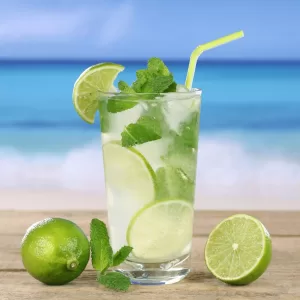Brazilian Caipirinha
The Liquid Celebration of Culture and Tradition
The caipirinha is not just a cocktail; it encapsulates the vibrant spirit of Brazil, reflecting the soul of a country known for its fervent celebration of life.
This article dives deep into the roots of the caipirinha, exploring its history, variations, and the significant role it plays in both Brazilian culture and the international cocktail scene.
The Historical Legacy of the Caipirinha
At the beginning of the 20th century, in the interior of São Paulo, the caipirinha was born as a simple home remedy for the flu.
Combining lemon, garlic and honey, it was a mixture that sought to relieve the symptoms of rural workers.
Over time, the garlic and honey were replaced by sugar, and so the drink we know today was born.
Cachaça
Cachaça, the distillate of sugar cane and the soul of the drink, was already a companion of the “caipiras”, a term that described the inhabitants of the countryside and which lent its name to the drink.
Cachaça has a rich history, intertwined with Brazil’s own economic and cultural history, from the days of colonial Brazil to its rise as an export product and national pride.
Regional and global variations
Each region of Brazil offers its own interpretation of the caipirinha, using local fruits and variations in the method of preparation.
While some prefer the classic combination of tahiti lime, others incorporate passion fruit, cashew, kiwi or strawberry.
On the international scene, the caipirinha has been transformed and adapted, resulting in variations such as the caipiroska, with vodka, or the caipiríssima, with rum.
The caipisaquê, which uses sake instead of cachaça, is a variation that reflects the Japanese influence on Brazilian cuisine.

The Caipirinha in Haute Cuisine and Mixology
In haute cuisine, the caipirinha is more than a cocktail: it’s an experience.
Chefs and bartenders experiment with premium ingredients, such as aged cachaças and exotic sugars, to create sophisticated versions of the drink.
The preparation technique is essential, from the careful maceration of the lemon to extract maximum flavor without bitterness, to the choice of ice, which must cool without diluting the drink too much.
Sustainability and awareness in production
Cachaça production has seen a growing trend towards sustainability.
Organic distilleries and responsible agricultural practices not only improve the quality of the final product, but also support local communities and protect the Brazilian ecosystem.
The Cultural Impact of Caipirinha
The caipirinha has transcended its status as a drink to become a cultural icon.
It is an ambassador for Brazil, present at festivals, celebrations and bars around the world.
Caipirinha not only delights the palate with its refreshing taste, but also tells the story of a country full of color, music and passion.
Conclusion: The Future of Caipirinha
Looking to the future, the caipirinha is destined to evolve, just like the Brazilian culture of which it is a part.
New ingredients and global influences will continue to shape the drink, but its essence will remain.
The caipirinha will always be Brazil in a glass, a celebration of the life and joy that are so characteristic of this tropical country.
The caipirinha, with its simplicity and complexity, is a liquid reflection of Brazil. This article invites you on a journey through the heart of Brazilian culture, an adventure where every sip is a discovery and every tradition is a story to be told.